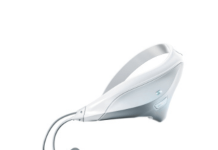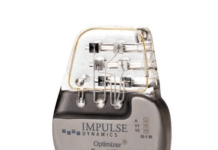Alzheimer’s disease affects nearly 6 million Americans. It’s the sixth leading cause of death among all adults and the fifth leading cause for those aged 65 or older, and the problem is only getting worse as the country ages: in 2016, 49 million adults living in the United States were 65 or older but by 2060 that number is expected to climb to about 95 million, or nearly 1 in 4 people.
Related: Smart Reactors wins €3m for nanocellulose material in artificial lung devices
Obviously there’s no known cure for Alzheimer’s right now but Cognito Therapeutics is looking to finally find one with its medical device that delivers both visual and auditory stimulation for the treatment for Alzheimer’s, and other neurodegenerative diseases.
The company is still studying the effects of its device, which isn’t yet available commercially, and to continue to build out those trials it has raised $35 million in fresh funding.
The round is an extension of the Series B round the company raised $73 million in March 2023 from FoundersX, Morningside, Alzheimer’s Drug Discovery Foundation, IAG Capital, Starbloom, WSGR; this brings the total round to $108 million and its total funding to $128 million.
Since raising its last funding, Cognito started its Ph3/Pivotal study for the treatment of Alzheimer’s Disease, called HOPE, which has over 250 patients enrolled so far.
“We have made great progress with study enrollment. We expect to have the study fully enrolled this summer with top-line readout and FDA submission expected in Q2 2025,” Brent Vaughan, CEO of Cognito Therapeutics, told VatorNews.
“We also had the readout from our 12 months Open Label Extension (OLE) to our Ph2 Overture study which showed durability through 18 mos of our strong treatment effect of 77% slowing in disease progression seen in the 6-month blinded portion of the study along with the continued lack of treatment-limiting Serious Adverse Events (SAEs) or treatment-related ARIA.”
Founded in 2016, Cognito’s wearable, which is a regulated medical device, uses light and sound, rather than magnets or electrical stimulation.
By shining specific frequencies of light and having specific frequencies of sound, every time that sound or that light triggers the optic, or the auditory nerves, those nerves fire and every time that light activates the optic nerve, the optic nerve fires an electrical impulse into the brain. By controlling and modulating the frequency of these light and sound stimulation, Coginto’s wearable can actually get the brain to start naturally firing at this frequency.
The device is put on the patient while an EEG is running so it can see the brain immediately start to respond. It can modulate the target in the patient while they’re sitting in front of them, and it can show that it’s starting to regenerate the brain’s ability to communicate with certain frequencies that are seen in healthy patients but which are missing in Alzheimer’s patients.
The funding will be used to support the HOPE study and commercialization preparation for the treatment of Alzheimer’s, as well as the continued expansion and protection of its IP position in gamma frequency therapy. It will also be used to support its Ph2 studies in Multiple Sclerosis and Parkinson’s Disease, which are expected to start this year.
This new funding comes less than a week after Cognito revealed that it enrolled its first patient in a biomarker substudy within the HOPE pivotal trial.
“In the biomarker sub-study of our HOPE Ph3/Pivotal study, we hope to gain insights into biomarker changes that can be used to better measure disease progression and response to treatment in Alzhemer’s patients as well as potentially discover how to identify patients who best respond to treatment,” said Vaughan.






